The contract will see aircraft carrier HMS Queen Elizabeth return to Rosyth so Babcock can carry out maintenance work on her.
Babcock said:
“We look forward to welcoming HMS Queen Elizabeth back to our facilities, where she was assembled, for her first docking and maintenance period. We continue to work closely with our MoD and Royal Navy customer on this national asset.”
Defence Minister Stuart Andrew said:
“After a phenomenal year of trials off the east coast of the US, this dry-docking contract is an important step for HMS Queen Elizabeth as she gears up for operations.”
Recently, engineers aboard sister ship HMS Prince of Wales at Rosyth turned on the ships diesel generators for the first time, say the Royal Navy.
Simon Lister, managing director of the Aircraft Carrier Alliance added:
“To all involved – and that is a large proportion of the entire workforce – my thanks and congratulations on achieving the first diesel start. This has seen focused effort, great innovation, real perseverance in the face of setbacks, and a commitment to quality that has been truly impressive. These are becoming the hallmarks of HMS Prince of Wales. Great teamwork from a large number of groups and individuals. Well done, thank you, and now for the gas turbines!”
The builders are hoping the carrier will be leaving Rosyth dockyard for sea trials this year. The Aircraft Carrier Alliance are confident she will be ready for sea trials by November 2019.
Sir Simon Lister of the Aircraft Carrier Alliance said the ship is physically complete.
“We’re now at that stage of fitting out all the equipment inside the ship. Wiring it up, plumbing it up, and setting all that equipment to work. One of the powerful things about this contact is that any budgetary over-run is shared between the industry and government, so there is a very strong pressure to get this done at minimum cost to the taxpayer and companies,” he said.
“It’s our objective to finish this programme on time and as close to budget as we can.”
People I spoke to at Rosyth on my last visit told me that building HMS Prince of Wales has been “20% to 25%” faster than building its sister ship HMS Queen Elizabeth. When on HMS Queen Elizabeth two years ago, we were told that the build of HMS Prince of Wales was expected to be around 8 months quicker thanks to “lessons learned” in the build process. The builders are already applying lessons from including improvements to the process of preparing its heat-resistant flight deck and installing an improved F-35 landing light systems earlier in the build process.
Recently, the Aircraft Carrier Alliance has successfully handed over the HMS Prince of Wales Navigation Bridge to the Royal Navy, a milestone originally planned for March 2019.



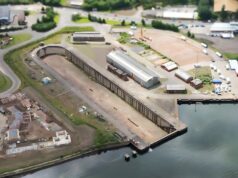



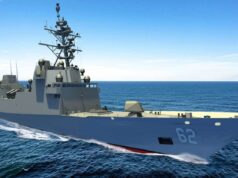
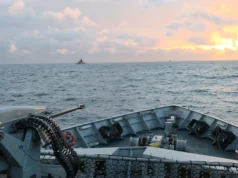

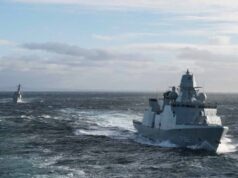
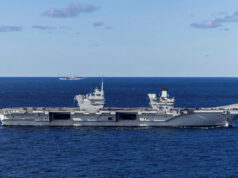
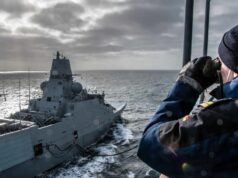

Not going to lie, I was hoping Belfast would win this contact (not sure if they even bid) regardless of how unlikely it would have been to win. It definitely had the best infrastructure to do so and would not require the ship to be disassembled before arriving in port.
Disassembled? The main mast retracts to go under the rail bridge. Hardly disassembled.
How would this impact any bid by Babcock for the SSS build, as I understand Babcock are part of Uk consortium bidding for the SSS contract. Would SSS fit one of Babcock’s other dry docks?
But wouldn’t they need the big blue crane anyway?
That’s true. The British consortium is Babcock, BAE Systems, Cammell Laird and Rolls-Royce. Can’t see final assemble at anywhere other than Rosyth.
Harland and Wolf in Belfast is currently up for sale.
I wonder if Babcock would be interested if it improved their options if bidding SSS and T31. They are primarily focused on renewable energy these days, but I think a UK owner might give them some leverage when applying for naval contracts.
I think that Harland and Wolff being valued at 5 million pounds is going to be a golden opportunity for a dynamic UK shipbuilder/industrialist to have a great facility with future growth in the various marine sectors including shipbuilding.
Good the PoW is progressing; probably be ready before it’s aircraft truly are. I expect a rash of contracts to go to Scots yards especially with another indeed vote looming.
Whether we like it or not, Scotland is likely to get priority for major surface ships. However, it’s not entirely due to attempting to keep the Scots happy.
BAE were already consolidating on the Clyde for efficiency reasons, and Rosyth is one of only 4 docks in the entire UK big enough to drydock the QECs, so keeping it open is strategically critical.
The only real competition left is Cammel Laird, which hasn’t built a full warship in decades. They do, however have recent commercial success, and experience with building blocks of the QEC. Two big strategic advantages as well: they’re English, so any investment is 100% safe long term, and they have TWO dry docks big enough for a QEC. That’s huge.
Callum does CL dry docks have the lifting capacity, I recall the cranes are relative small. But then again they may not need large capacity cranes for the work.
Inchgreen has huge potential for the new digital shipyard that would complement other UK yards.
They can’t have every single last one without exception though, the Clyde has got plenty of work, Rosyth would probably be the best place to assemble the solid support ships (with blocks built around the U.K.) so the Type 31 contract should go to Cammell Lairds on the Mersey.
Problem is its the design that may swing who wins the T31. I’d like to see CL build the T31 as I think they’re one of the most competitive yards in Europe if not globally. But do BAe have the best design for 250m…
H and W could assemble the SSS but they’re not in the consortium.
Harland and Wolff can be a subcontractor. Didn’t Harland and Wolff build certain bits for the Wave tanker built at Barrow? Even if they were part of the losing side, that’s not to say they cannot get contracts for other hull blocks.
meant to write “Indie” vote looming
Is it?
Thank God Chris Grayling wasn’t involved in choosing which shipyard to maintain the QEC.
Holyhead would probably have been given the contract with no tender.
[…] Earlier in the month, a contract was awarded that will see aircraft carrier HMS Queen Elizabeth return to Rosyth so Babcock can carry out maintenance work on her. […]